This is Part 7 from 125 Building Blocks for Your Bakery Business
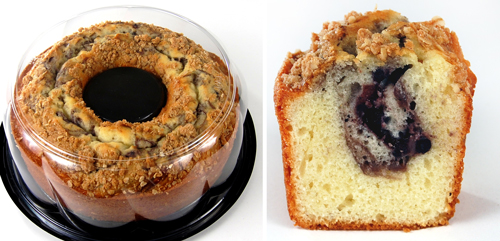
In product development, we spend almost as much time on choosing the packaging as we do on designing the products themselves. In many cases, we begin with the packaging and then design a product to fit inside of it. That’s because strong, reliable packaging is hard to find. Packaging is a critical part of the presentation. A product’s stability hinges on the packaging.
Just as you seek to maximize your use of ingredients, so too should you seek to maximize your use of packaging. Design your product lines to fit in matching packaging. This will make everything, including the label printing, more cost effective.
How to Design Products to Fit Packaging
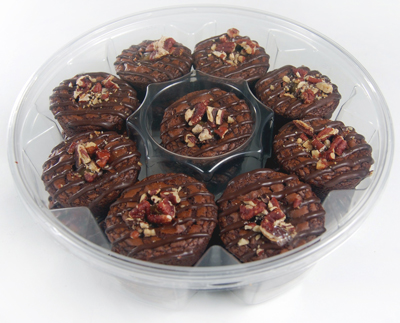
Ideally you want to work with existing packaging concepts. It’s more sensible and affordable to begin with an existing container. Ideally, you want the packaging to be something you already have on hand or one that already exists and easy to purchase from your favorite distributor. Try to work backwards in designing your products to fit in that type of packaging.
If the desired shape of your container or box does not already exist, you will end up spending more money on custom-fit packaging. In some cases, you may be required to commission the purchase of a die, which is basically a giant cookie cutter that is tooled to custom-cut your packaging out of plastic or cardboard. That is a costly endeavor that you want to avoid if possible.
How to Measure the Footprint
The term for how much space a product takes up on a table or display is called the “footprint.” The reason why the footprint is important is because every store has a finite amount of space for displaying products. Bigger footprints take up more space. Every inch of shelf space, counter space, or room in your refrigerated display case matters. Ideally, every inch is packed with the most profitable array of items.
When you are selling to big chains like Costco or supermarkets, visit those stores and examine the footprints of the products that are already being sold there. This will give you a sense of how to design your own products to fit in that type of store.
American buyers, for the most part, seek jumbo-sized items sold at a low cost. Advertisements have further conditioned us to place more value on those two qualities combined. Most customers make their shopping decisions based on perceived size (as opposed to ounce weight listed on the label) so it’s beneficial to style your products and packaging according to how big they look.
For example, when you make a cake squatter in height but wider in diameter, you create a larger perceived size. However at a certain point of squatness, the cake starts to look thin, at which point you have gone too far and created a lower perceived value. You want to toggle with your height versus width until you achieve the optimal balance to the eye.
Some manufacturers will go so far as to use packaging that intentionally deceives the eye. For instance, a container that has a concave bottom as opposed to a flat bottom lessens the interior space within. A round container that is also tapered on the sides will achieve a wider diameter while tightening the space within. A container with individual pockets for the items within not only helps protect the product but also creates a larger perceived size and value.
Containers should look full and be full, but not so packed that the items get crushed or stuck together. Avoid half filling or partially filling a container. The empty space gives the product too much room to bounce around and break. Cakes are one exception to this rule. Cakes need at least one inch of head space to prevent their decorations from getting damaged.
How to Study Merchandising Trends

How your product will be merchandising in stores should determine your choice of packaging. A product as simple as cookies can be sold in many different ways depending on how you intend to display them.
Example: Cookie Packaging Variations
- Haphazardly packed in a bag or in a bag with a cellophane window
- Haphazardly packed in a round plastic container (round containers have a larger perceived size but they create empty space within multi-unit case packs)
- Haphazardly packed in a square plastic container (efficient use of case space)
- Stacked in a plastic container that has cavities (larger perceived size because of cavity separators, higher perceived quality since each stack has its own space)
- Stacked vertically in a cellophane sleeve
- Stacked horizontally in sleeves within bags
Unusual packaging helps products stand out on the shelves, which may improve sales.
In retail bakery display case, your packaging doesn’t matter as much because it’s not a selling point for your products. In that scenario, packaging only comes into play after the product has been chosen by the customer. However, in that instance, your packaging should still be attractive and practical. It should also include your bakery name on the outside.
How to Test for Stackability
It is a proven fact that a generous display of merchandise is more attractive to customers than a small, thin display. That’s why retail stores build pyramids and end caps loaded with products. A high volume display evokes a higher perceived value. When a customer has the impression that a store invested in a high volume of that product, they assume it means there is a high demand for that product, which in turn means it’s a decent product worth buying. Whether or not this actually true, that’s the psychological effect large displays have on customers.
When it comes to products sold in boxes or plastic packaging, ideally they should be stackable, both for space efficiency and to create the look of fullness. When stacked, your packaging must be able to withstand weight from above. Stackable containers should be able to nest as well. Nesting prevents them from sliding around, which in turn prevents toppling. Most containers are designed for this option. Nevertheless, I recommend testing the packaging with your product in it to ensure that it can nest and stack without the lid denting, caving in or sliding sideways.
One type of packaging that is not stackable is bagged items. Bagged items are typically merchandised in rows on shelves. As long as the store is equipped to merchandise bagged items on deep shelves, then you may explore that option.
When designing products for any store including your own, keep in mind where, in relation to the customer, those products will be merchandised. For example, Trader Joe’s sells all their cookies on high shelves so the packaging you chose for products designed for Trader Joe’s should be compatible with an eye-level shelf display where only the side of the product shows. On the other hand, Trader Joe’s sells their more perishable baked goods such as muffins and cakes on an island (table situated in the middle of the sales floor) so the packaging for an item like that should be compatible with a waist-height table display where the top of the product shows.
How to Measure Case Fit
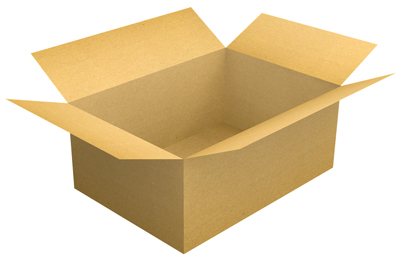
Most wholesale baked goods sold at a high volume ship by the case. When it comes to cakes, typically 4-6 cakes are packed per case, usually with a corrugated “pad” in between layers. The pad, rectangular piece of cardboard, is a little smaller than the inner dimensions of the box so it can easily be inserted and removed. It helps keeps each layer of cakes snug.
Corrugated boxes are a significant expense. Their cost should be factored into the price of the product. That means if you pack six cakes per case, the cost of the (box + pad + tape) ÷ 6 should be applied to each unit.
Maintaining an inventory for your corrugated boxes is smart but also a storage concern because they take up space. These kinds of boxes are typically stored flat to minimize their volume. You will be required to store them at least 6 inches off the ground. They will need to be folded into shape by hand.
If you invest in a particular size of corrugated box, try to design it so you can fit other products into it as well. That way, you are maximizing use of the case. Moreover, if one product is discontinued, you still have use for the case.
How to Measure Pallet Fit
When we talk about selling products by the pallet, we refer to them in terms of TI and HI.
TI = the number of cases stacked per layer on a pallet
HI = the number of layers stacked vertically on a pallet
TI x HI = the number of cases on a pallet
TI x HI x the number of units per case = the number of units on a pallet
When stacking boxes on pallets, you want to try to fit the maximum number of cases that are possible. Whenever possible, it also helps to configure them like so:
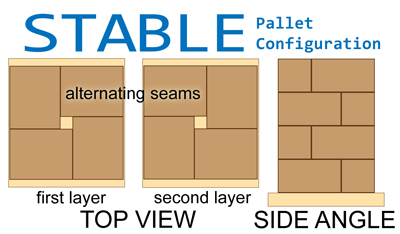
Note that the seams alternate like bricks. No two neighboring layers are stacked in the same configuration. This prevents the layers from shifting around.
Pallets are all relatively the same size but not all facilities accept the same height. It will depend on their facility’s storage clearance or the clearance of the delivery trucks. Before you build a pallet’s worth of product, make sure to confirm the clearance of that customer’s storage and transportation vehicle.
A pallet of cases is typically shrink-wrapped with “corners.” Corners are long V-shaped cardboard strips that run the vertical length of each outside corner. Corners hold all the cases in place and protect the outlying ones from damage.
How to Invest in Packaging
Packaging is a significant expense. Unless you are in desperate need, I would avoid buying your packaging at retail stores such as cake decorating supply stores. At those places, the markup is huge, typically 100% or more. This will inevitably cut into your profit margin.
Most bakeries buy their packaging from distributors. Once you hit a high enough volume, you may have the option to buy directly from the manufacturer. This is the ideal scenario, since it cuts out the middleman, thus lowering your cost per unit. It also gives you more leverage on options and deals.
How to Design the Labeling
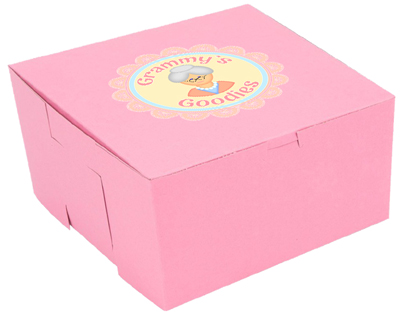
No matter how you sell your product, except in the case of private label sales, at minimum, it is to your advantage to add a label advertising the name and logo of your brand.
How to Make Homemade Labels
You may opt to print your labels using a regular printer. I like to use Microsoft Word in combination with the 4M label company, because every one of 4M’s products has a matching digital template that you can customize with your own logo and text. Just look for the code on the outside of the box or envelope (in some cases, you may need to download the template) in Microsoft Word’s list of labels. Note that these types of labels, since they are not laminated, are more sensitive to refrigeration and freezing. They are more likely to smudge or pill than a professionally printed, glossy label.
How to Outsource Custom Printed Labels
If your product requires refrigeration or freezing and homemade labels are not durable enough, then you will need to hire a label company to print your labels for you. Some baking companies who hire printers opt to use one generic label for all products. That label includes a logo and company name plus a blank space for stamping the product title. The stamping creates another step at the packaging phase. However, the generic label + stamps combination is an economical investment, since you can buy one label design in bulk and not worry about getting stuck with inventory in case a product is discontinued.
Buying labels in bulk lowers the cost per unit. Ask your label manufacturer where the price breaks lie.
List Ingredients
There are many parameters around how you can and cannot label food. For U.S. businesses, I recommend studying the most up-to-date information from the FDA on the laws and ethics of food labeling.
If you sell your own product in a retail bakery, you are required to keep your ingredients and nutritional information on hand in case a customer requests it. However you are not required to list the information on your packaging.
Your ingredients list should read in order of most-to-least according to weight. It should list every single ingredient including water, food colorings, and flavorings. If an ingredient contains sub-ingredients, then you must also include the sub-ingredients in parentheses. Your ingredients list should also include an allergen statement, indicating which allergens are present in the product and/or a disclaimer if the product is made in a facility that uses any of the following allergens: peanuts, tree nuts, soy, wheat, milk, eggs, fish and shellfish.
Calculate Nutritional Values
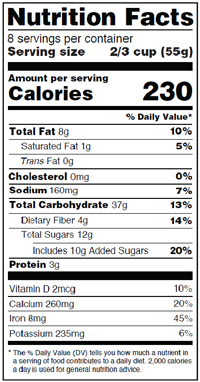
If you manufacture your product to be re-sold in supermarkets or other venues, you may be required to provide both ingredient and nutritional facts on your packaging. It depends on the regulations in your area and the method of sale whether or not this is necessary. Facts about this topic may be found here on the FDA’s website.
A popular free tool for calculating a nutritional statement may be found at SELF Nutrition Data although it is not designed for commercial use. It also requires signing up for a mailing list. The most widely used commercial software for generating nutritional statements is called Nutracoster from SweetWARE. Nutracoster has a learning curve but the advantage of it is that it accumulates your database of ingredients and recipe elements so the more you use it, the more efficient it becomes. This software is designed for professional labeling. It also calculates food costs and labor costs.
In order to navigate either of these tools, you must possess a good understanding of volume to weight conversions. A handy conversion tool can be found at Convert-Me.com.
This is the end of Part 7 from 125 Building Blocks for Your Bakery Business. Return to the Table of Contents or proceed to Part 8 – Bakery Distribution and Transportation
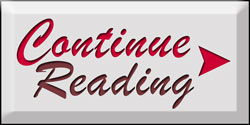
Related Material




